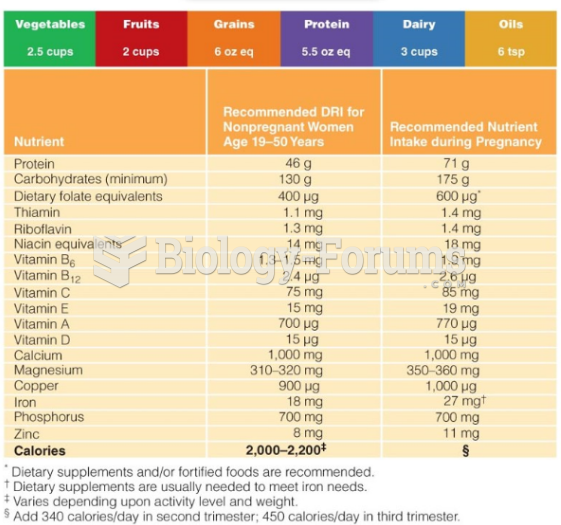Answer to Question 1
A pregnant adolescent presents a special case of intense nutrient needs. Young teenage girls have a hard enough time meeting nutrient needs for their own rapid growth and development, let alone those of pregnancy. Many teens enter pregnancy deficient in vitamins B12 and D, folate, calcium, and iron, all of which increase the risk of impaired fetal growth. Pregnant adolescents are less likely to receive early prenatal care and are more likely to smoke during pregnancytwo factors that predict low birthweight and infant death.
Adequate nutrition is an indispensable component of prenatal care for adolescents and can substantially improve the outlook for both mother and infant. To support the needs of both mother and fetus, a pregnant teenager with a BMI in the normal range is encouraged to gain about 35 pounds to reduce the likelihood of a low-birthweight infant.
Answer to Question 2
the neural tube that will later develop to form the brain and spinal cord. A neural tube defect (NTD) occurs when the tube fails to close properly. Each year in the United States, an estimated 3000 pregnancies are affected by an NTD. The two most common types of NTD are anencephaly (no brain) and spina bifida (split spine). In anencephaly, the upper end of the neural tube fails to close. Consequently, the brain is either missing or fails to develop. Pregnancies affected by anencephaly often end in miscarriage; infants born with anencephaly die shortly after birth. Spina bifida is characterized by incomplete closure of the spinal cord and its bony encasement. The membranes covering the spinal cord and sometimes the cord itself may protrude from the spine as a sac. Spina bifida often produces paralysis in varying degrees, depending on the extent of spinal cord damage. Mild cases may not be noticed. Moderate cases may involve curvature of the spine, muscle weakness, mental handicaps, and other ills, while severe cases can lead to death.
To reduce the risk of neural tube defects, women who are capable of becoming pregnant are advised to obtain 400 micrograms of folic acid daily from supplements, fortified foods, or both, in addition to eating folate-rich foods. The DRI committee recommends intake of synthetic folate, called folic acid, in supplements and fortified food because it is absorbed better than the folate naturally present in foods. Foods that naturally contain folate are still important, however, because they contribute to folate intakes while providing other needed vitamins, minerals, fiber, and phytochemicals.







